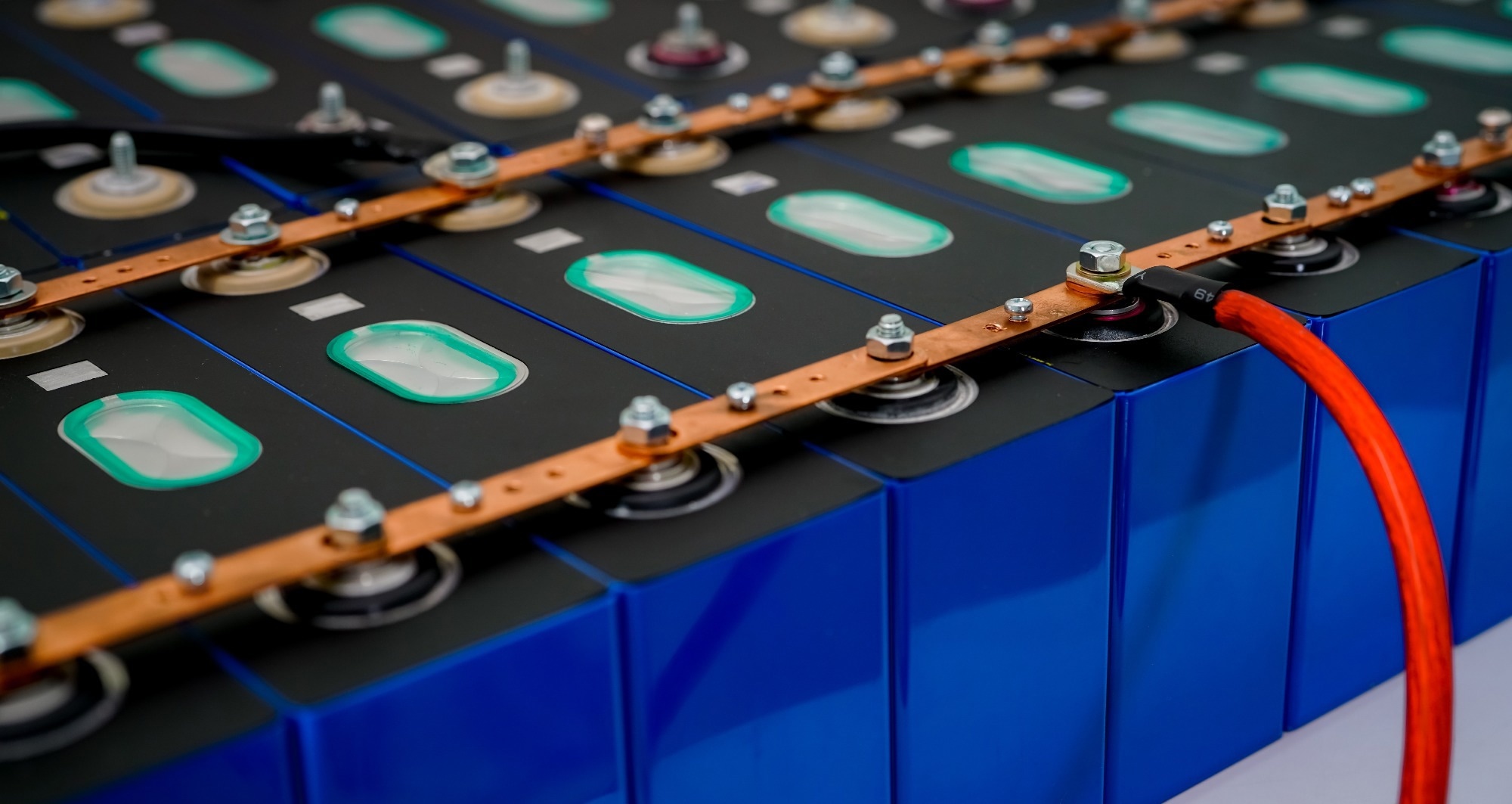 By Muhammad OsamaReviewed by Lexie CornerMay 27 2025
By Muhammad OsamaReviewed by Lexie CornerMay 27 2025A recent study published in Advanced Materials investigates how interfacial adhesion influences lithium (Li) plating behavior in anode-free solid-state batteries (SSBs) that incorporate carbon interlayers.
By examining the effect of lamination pressure on interfacial toughness, the researchers identified key parameters that govern the location and uniformity of Li deposition, critical factors for improving the safety, efficiency, and longevity of next-generation SSBs.

Image Credit: Fahroni/Shutterstock.com
Context in Battery Technology
SSBs have gained attention as alternatives to traditional lithium-ion batteries (LIBs), primarily due to the replacement of flammable liquid electrolytes with solid electrolytes (SEs). This change allows for the use of Li metal anodes and offers improvements in energy density and thermal stability.
Anode-free battery designs, which generate Li in situ during the first charge, can simplify manufacturing and potentially increase energy density. However, challenges such as uneven Li deposition, dendrite formation, and interfacial degradation continue to limit practical application. Carbon interlayers have been explored to mitigate these issues, but a more detailed understanding of interfacial behavior is needed.
Investigating Interfacial Adhesion and Lithium Plating
The study focuses on how the adhesion between carbon interlayers and solid electrolytes influences Li plating in anode-free SSBs. Lamination pressure was varied from 100 to 400 MPa during the fabrication of carbon interlayers to examine its effect on interfacial toughness and Li deposition.
The interlayers consisted of amorphous or hard carbon mixed with polyvinylidene fluoride (PVDF) and N-methylpyrrolidone (NMP), laminated onto lithium phosphorus sulfur chloride (Li₆PS₅Cl) solid electrolyte pellets.
Interfacial toughness was measured using mechanical peel tests, while cross-sectional plasma-focused ion beam scanning electron microscopy (PFIB-SEM) was used to determine the Li plating location after charging to a capacity of 2 mAh cm-2.
Findings on Adhesion and Lithium Deposition
The study found a clear correlation between interfacial toughness and Li plating location. As lamination pressure increased, interfacial toughness rose from approximately 9 to 41 ± 5 J/m². Once it exceeded about 10 J/m², Li deposition shifted from the carbon–solid electrolyte interface to the carbon–current collector interface.
Below this threshold, deposition occurred at both interfaces, indicating less uniform plating.
Lower lamination pressures resulted in microscopic voids at the carbon–solid electrolyte interface, encouraging Li nucleation and increasing the likelihood of mechanical stress and failure.
In contrast, higher lamination pressures promoted a more conformal interface and directed Li growth toward the current collector. These findings suggest that lamination pressure—and consequently adhesion strength—affects Li plating behavior and battery performance.
Download your PDF copy now!
Implications for Battery Design and Manufacturing
This study highlights the role of interfacial mechanics in shaping lithium plating behavior in anode-free SSBs. By demonstrating that lamination pressure—and the resulting interfacial adhesion—affects the location and uniformity of Li deposition, the findings suggest practical strategies for optimizing battery fabrication.
Adjusting manufacturing parameters such as lamination pressure can improve deposition consistency, reduce mechanical degradation, and enhance battery performance and cycle life.
The observed relationship between interfacial toughness and plating location also informs computational modeling and the design of advanced materials. A defined threshold for interfacial toughness offers a useful metric for interface optimization, while a better understanding of electro-chemo-mechanical interactions can guide the development of carbon interlayers that accommodate volumetric changes during operation.
Future research could explore alternative materials and surface treatments to refine interfacial properties. These insights contribute to ongoing efforts to develop more reliable and efficient energy storage systems suited for applications including electric vehicles, portable electronics, and grid-scale storage.
Journal Reference
Liao, D, W., et al. (2025). Effects of Interfacial Adhesion on Lithium Plating Location in Solid-State Batteries with Carbon Interlayers. Advanced Materials. DOI: 10.1002/adma.202502114, https://advanced.onlinelibrary.wiley.com/doi/10.1002/adma.202502114
Disclaimer: The views expressed here are those of the author expressed in their private capacity and do not necessarily represent the views of AZoM.com Limited T/A AZoNetwork the owner and operator of this website. This disclaimer forms part of the Terms and conditions of use of this website.